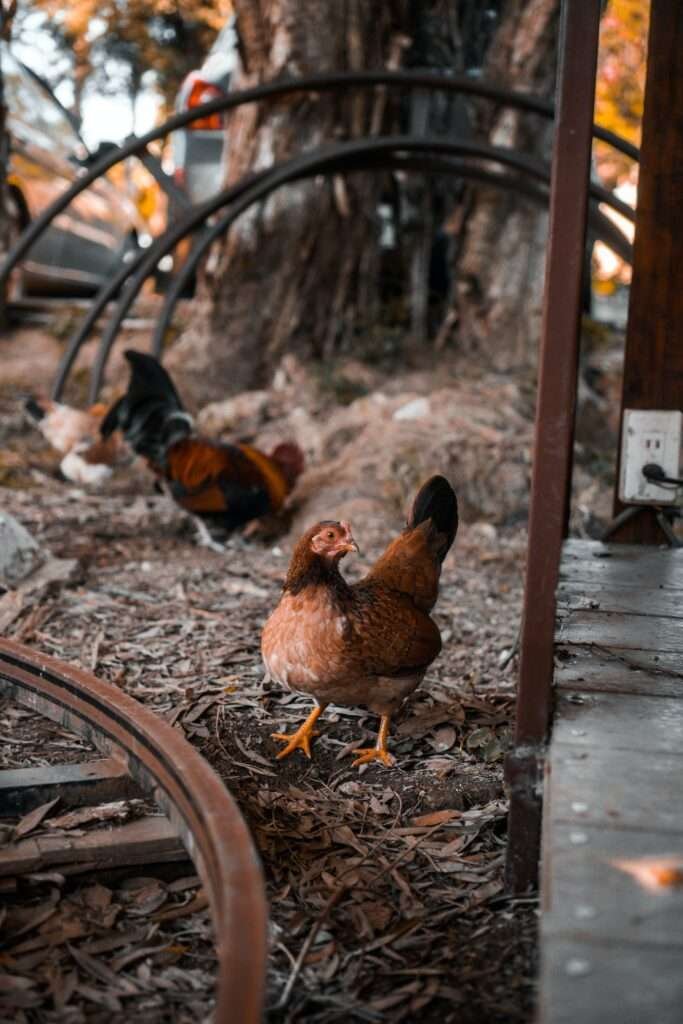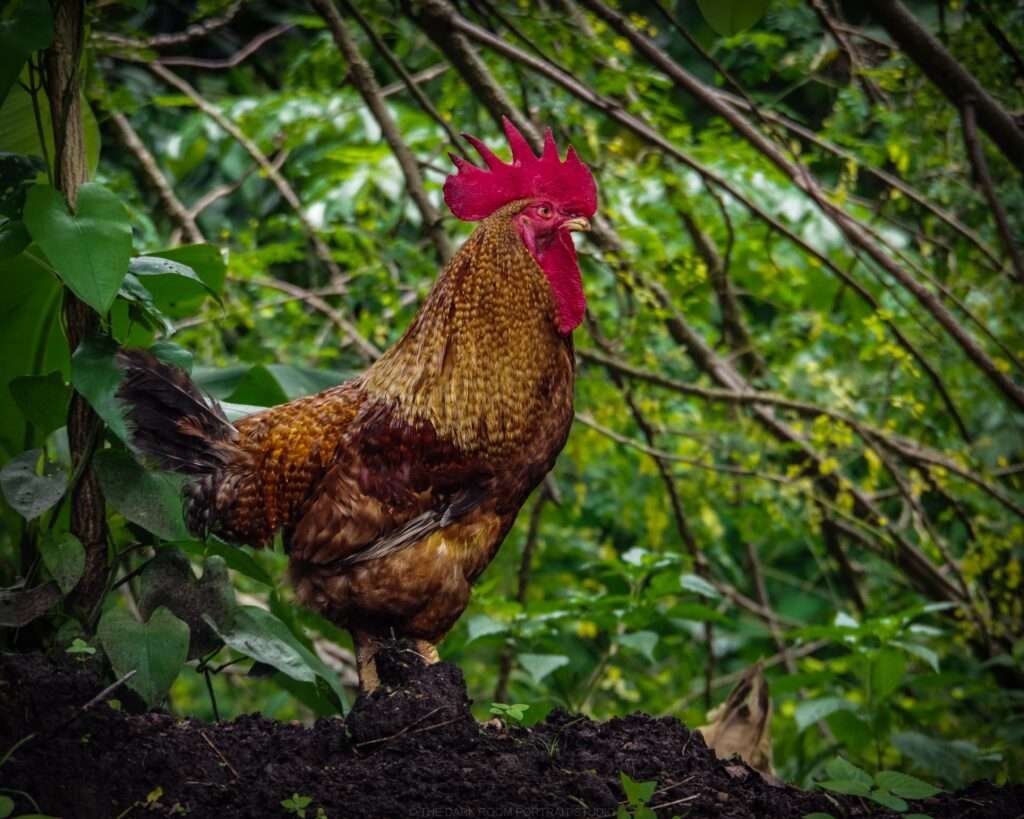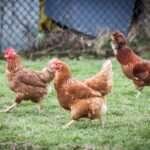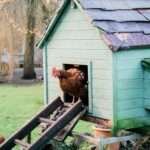Raising chickens comes with the responsibility of ensuring their well-being, especially during challenging weather conditions like heat waves. Just as humans can suffer from heat-related issues, chickens are also susceptible to heat stress and its potential consequences. As a diligent and caring chicken keeper, it’s crucial to understand how heat waves can affect your flock and take proactive steps when caring for your chickens during a heat wave. In this article, we will delve into the best practices for caring for your chickens during a heat wave, ensuring they remain safe, comfortable, and healthy throughout the hot days.
Recognizing Heat Wave Conditions:
As temperatures climb during a heat wave, it’s important to recognize the conditions that pose a risk to your chickens’ well-being. A heat wave is typically characterized by several consecutive days of high temperatures, often exceeding the normal seasonal average. For chickens, extreme heat can become dangerous when temperatures rise above 85°F (29.5°C). Beyond this point, they struggle to regulate their body temperature effectively.
Cool Chickens:
Unlike humans, chickens don’t sweat to cool down. Instead, they rely on different mechanisms to release excess heat from their bodies. One primary method is respiration or panting, which allows them to exchange warm air for cooler air. Providing proper ventilation in the coop and run is crucial during hot weather to support this natural cooling process. Additionally, chickens’ combs and wattles help dissipate heat by increasing blood flow to these areas.
Cool Shelters:
Offering shaded areas is a fundamental step in protecting your flock from the direct and intense heat of the sun. Shade can be provided through natural sources like trees, shrubs, or tarps strategically positioned over the coop and run. Ensure that chickens have access to shaded spots throughout the day. Proper coop ventilation is equally important, as good airflow helps prevent heat from accumulating in enclosed spaces.

Cool Drinks:
During a heat wave, maintaining proper hydration is critical for chickens. Place multiple water stations around the coop and run, ensuring easy access. Consider adding frozen water bottles to the water containers to help keep the water cool for a longer period. Electrolyte supplements can be added to the water to support hydration and electrolyte balance.
Cool Areas:
Helping chickens cool down involves creating designated cooling zones within the coop and run. Damp soil or sand patches can serve as natural cool spots where chickens can lie down to regulate their temperature. Additionally, shallow containers of water can be placed in the run for chickens to wade in. Dust bathing, a natural behavior, not only helps chickens clean their feathers but also aids in cooling.
Recognizing Signs of Heat Stress:
It’s crucial to be attentive to signs of heat stress in your chickens. Heavy panting, wings drooping, lethargy, and reduced activity are common indicators of heat stress. Chickens may also seek out shaded areas or stand with their wings spread to release heat. Monitoring their behavior closely during hot weather allows you to intervene promptly if you notice any signs of distress.
Responding to Heat Stress:
If a chicken is displaying signs of heat stress, it’s important to take immediate action. Gently cool the chicken by using cool water or a damp cloth on its comb, wattles, and feet. Avoid using ice-cold water, as extreme temperature changes can shock their system. If the chicken’s condition doesn’t improve or worsens, consult a veterinarian for further guidance and treatment options.

Further Details on Caring for Your Chickens During a Heat Wave
If you have kept reading this far, then we know you are serious about the health of your flock and wanting all the best information available. Lets expand on the basics previous and dig deeper into the details of caring for your chickens during a heat wave.
Understanding How Chickens Lose Heat:
- Chickens rely on several physiological mechanisms to maintain their body temperature in hot conditions.
- Respiration and Panting: Chickens pant to expel hot air from their bodies and bring in cooler air. This process helps regulate their internal temperature.
- Blood Flow to Combs and Wattles: Increased blood circulation to these areas helps release excess heat. Chickens with larger combs and wattles are more efficient at cooling themselves.
- Dust Bathing: Chickens instinctively dust bathe, which involves rolling in dry dirt or sand and then shaking their feathers. This behavior not only helps keep feathers clean but also cools the skin underneath.
Providing Adequate Shade and Ventilation:
- The Importance of Shade: Shade is a crucial aspect of preventing heat stress. Direct sunlight can cause chickens to overheat quickly. Positioning the coop and run in shaded areas or adding shade structures can significantly lower the risk of heat-related issues.
- Optimal Coop Ventilation: Proper ventilation is vital to allow hot air to escape and fresh, cooler air to circulate. Install vents and windows in the coop to ensure adequate airflow, helping to maintain a more comfortable environment for the chickens.
Keeping Cool and Hydrated: Implementing Preventive Measures:
- Maintaining Hydration: Chickens consume more water during hot weather to stay hydrated and regulate their body temperature. Ensure water is always available, and consider placing additional water stations in shaded areas.
- Frozen Treats: Frozen fruits, vegetables, or plain yogurt can serve as refreshing treats that provide hydration while also helping to cool down the chickens.
- Electrolyte Balance: Electrolyte supplements added to water can help replenish essential minerals lost through panting and sweating, supporting overall hydration.
Creating Cooling Zones and Enrichment Activities:
- Designated Cooling Areas: Provide damp soil or sand patches within the run where chickens can dig and lie down to cool off. The moisture in the soil evaporates, creating a cooling effect.
- Shallow Water Pools: Adding shallow containers of water to the run allows chickens to wade and stand in the water to reduce body temperature. However, ensure the water is changed regularly to prevent contamination.
Warning Signs of Heat Stress:
- Key Indicators: Watch for signs of heat stress, which can include heavy, rapid panting; wings drooping; lethargy; and reduced movement. Chickens may appear restless and seek cooler areas.
- Immediate Action: If you notice a chicken displaying signs of heat stress, act promptly to prevent further distress. Gently wet the chicken’s comb, wattles, and feet with cool water and monitor its response.
Heat Stress First Aid:
- Cooling Techniques: Place the distressed chicken in a shaded, well-ventilated area and gently wet its body with cool water. Avoid using ice-cold water to prevent shocking the system.
- Monitoring: Keep a close watch on the chicken’s behavior and condition. If the chicken’s condition doesn’t improve, seek professional veterinary care immediately.

Adjusting Feeding Routines and Monitoring Egg Production:
- Reduced Appetite: Chickens may eat less during heat waves, as the digestion process generates heat. Adjust feeding times to early morning or later in the evening when temperatures are cooler.
- Managing Egg Production: Extreme heat can temporarily disrupt egg-laying. Chickens may lay fewer eggs or experience a temporary pause in production. This is a normal response to conserve energy and prevent overheating.
Maintaining a Comfortable Night time Environment:
- Nighttime Conditions: Ensure the coop provides a comfortable environment for chickens to rest during the night. Proper ventilation remains crucial to prevent the buildup of heat and moisture.
- Allowing Roosting Choices: Chickens instinctively choose their roosting spots based on temperature preferences. Provide multiple roosting options to allow them to find the coolest spots in the coop.
Reflecting and Preparing for Future Heat Waves:
- Learning from Experience: Each heat wave experience provides insights into how well your chickens cope with extreme temperatures. Pay attention to their behavior and any adjustments you make to their environment.
- Evaluating Strategies: After the heat wave has passed, assess the effectiveness of the preventive measures you implemented. Consider what worked well and what could be improved upon for the future.
Caring for Your Chickens During a Heat Wave
Caring for your chickens during a heat wave involves understanding their physiological responses to heat, creating a cool and comfortable environment, and responding promptly to signs of distress. By recognizing the risks of heat stress, providing essential resources such as shade, water, and cooling zones, and closely monitoring your chickens’ behavior, you can minimize the impact of high temperatures on their health and well-being. Adjusting feeding routines, ensuring a comfortable night time environment, and learning from each experience will empower you to become a more knowledgeable and capable caretaker for your flock during challenging weather conditions. By prioritizing their comfort and safety, you’re not only providing responsible care but also nurturing a stronger bond with your cherished feathered companions.






